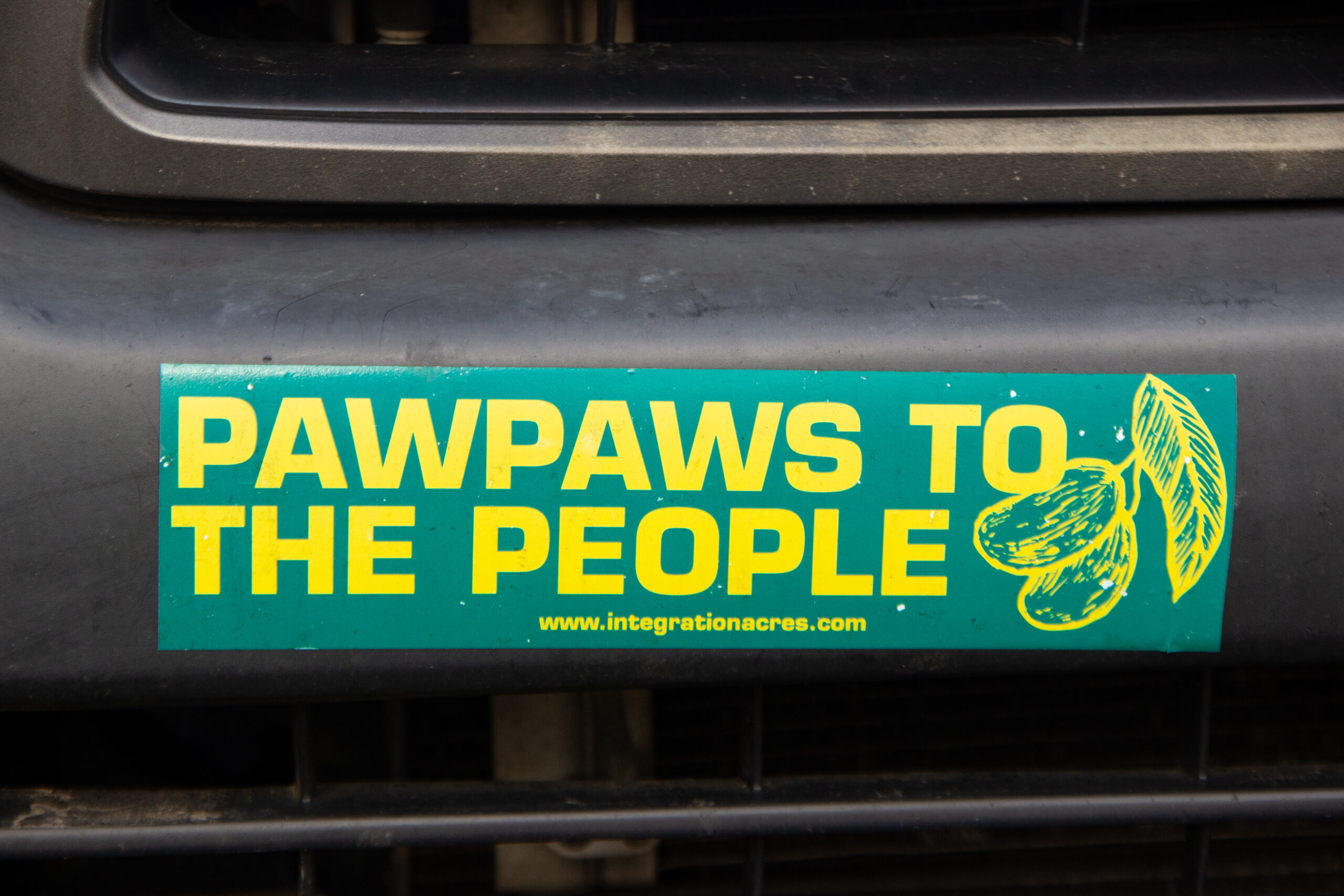
Written and Photos by Jamie Miller
“The flavor of the pawpaw sells itself,” says Chris Chmiel of Integration Acres. An overcast afternoon lit the farmer’s pawpaw trees. Small buds decorated trees, alongside pink, white and green ribbons. The plants were treated to an unusually warm day in February.
Chmiel smiled when speaking about his produce. One of the cofounders of the original 1999 Pawpaw Festival, the farmer is passionate about spreading the fruit far and wide.
Commonly compared to the taste profile of a mango, the American pawpaw is native to the eastern U.S. and southern Ontario, Canada. Pawpaw trees are well-suited for the foothills of Appalachia.
The fruit has a history as rich as the soil in which it grows. It was once called riwaharikstikuc by the Pawnee and tozah hu by the Kansa. Now, to Chmiel and many Southeast Ohio residents, the pawpaw is a coveted crop.
Integration Acres recognizes the importance of diversifying sources of revenue. The website sells Spicewood allspice and jam, ramp crackers, hickory nuts and shelled black walnuts. Chmiel says Integration Acres’ website is its main source of revenue. But instead of selling locally, Chmiel says most sales are shipped out-of-region.
“If you’re selling at a local farmer’s market … very few people are doing it for the money,” Chmiel says. Small farms just can’t compete with large-scale corporations.
Dr. Art Trese of Ohio University’s Plant Biology Department agrees. “Some people tell me, ‘I grow almost all of the food I eat on my own land!’ But you need to think about the density of calories per acre. Growing lettuce is great, but you’d need to grow a lot of it to rival the calories available in a cow.”
It is in this way a farmer may struggle to create a self-sufficient farm, let alone a profitable multi-crop business model.
Southeast Ohio resident Shelley Beard supports a model of food distribution that prioritizes affordability, locality, and community. The gardener is known to give away her eggs for free. She says her approach to community was gifted to her in childhood.
“[My uncle and aunt] shared all sorts of crops: strawberries, corn, apples, eggs. There was plenty to go around,” Beard says. Like Chmiel, she promotes increased accessibility to local foods, be it eggs or pawpaws.

Beard also considers the necessity of affordable food when she shares her goods. “For me, it’s about having security. I grew up facing food instability in Appalachia. There is such inequity,” Beard says. Beard moved to a wealthy suburb on the outskirts of Columbus in the ninth grade. This is when she began to be disgusted with food inequity.
“Nobody seemed to worry about the things we did,” Beard says. “Nobody seemed to be thinking about food.”
Beard maintains a garden and a coop full of chickens to ensure a baseline of food stability and ethical acquisition of food. She spoke fondly about each of her six poultry children.
“I put a space heater [in the chickens’ pen] when the weather got cold. But I know exactly what my chickens are eating. I know they’ve lived a happy and comfortable life,” Beard says.
The chickens feast upon frozen blueberries in the summertime, and Beard’s son has immortalized them on canvases in her kitchen.
Beard also buys products like dairy and meat from the local farmer’s market. Because of farm-to-market proximity, there are also less fossil fuel emissions. This contrasts with large-scale farming production and transportation, which are the leading causes of fossil fuel emissions.
Trese and Beard know the local and large-scale food production so they can ensure their goods are ethically and locally sourced. Trese shops at farmers markets and local grocers because it allows him to endorse the farmers he knows.
“I buy my meat from Seamen’s because I know some of the farmers who sell there. I’ve been to their farms,” Trese says. “I buy from the farmer’s market to help people out.”